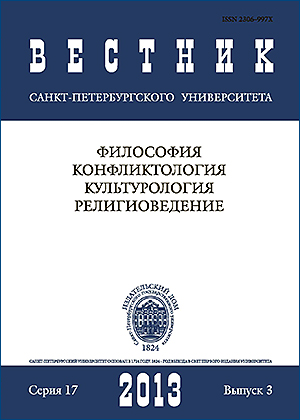The image of nature in the works by J. W. von Goethe and its influence on ecological aesthetics
Abstract
The article deals with Goethe’s explanation of the renovation in science by world comprehension of art, by interaction of art and science and by understanding of nature, human and culture as an integrity. The analysis of Goethe’s ideas is carried out in comparison of with those of Kant and Leibniz — the main figures for Goethe in the process of formation his position and attitudes. The research draws a conclusion that Goethe’s philosophy of nature corresponds to the original synthesis of ideas, which lies outside the borders of subjective and objective idealism, stands apart from the religion and is oriented towards the concretization of scientifi c knowledge. Goethe’s philosophical methodology shapes the problem of studying of the surrounding world’s objects through the unity of the common and the individual, the ideal and the material as the integrity of individualities. Goethe defines the essence of his method as intellectual contemplation that can be seen as a prototype of Hermeneutics, which becomes more and more significant at the turn of the 20st and 21st centuries not only for human and cultural studies, but also for nature, and demonstrates an example of ecological aesthetics.
Keywords:
nature, science, ethodology, art, human, individuality, freedom, morality, religion, world, culture, creativity
Downloads
References
Downloads
Published
How to Cite
Issue
Section
License
Articles of "Vestnik of Saint Petersburg University. Philosophy and Conflict Studies" are open access distributed under the terms of the License Agreement with Saint Petersburg State University, which permits to the authors unrestricted distribution and self-archiving free of charge.






